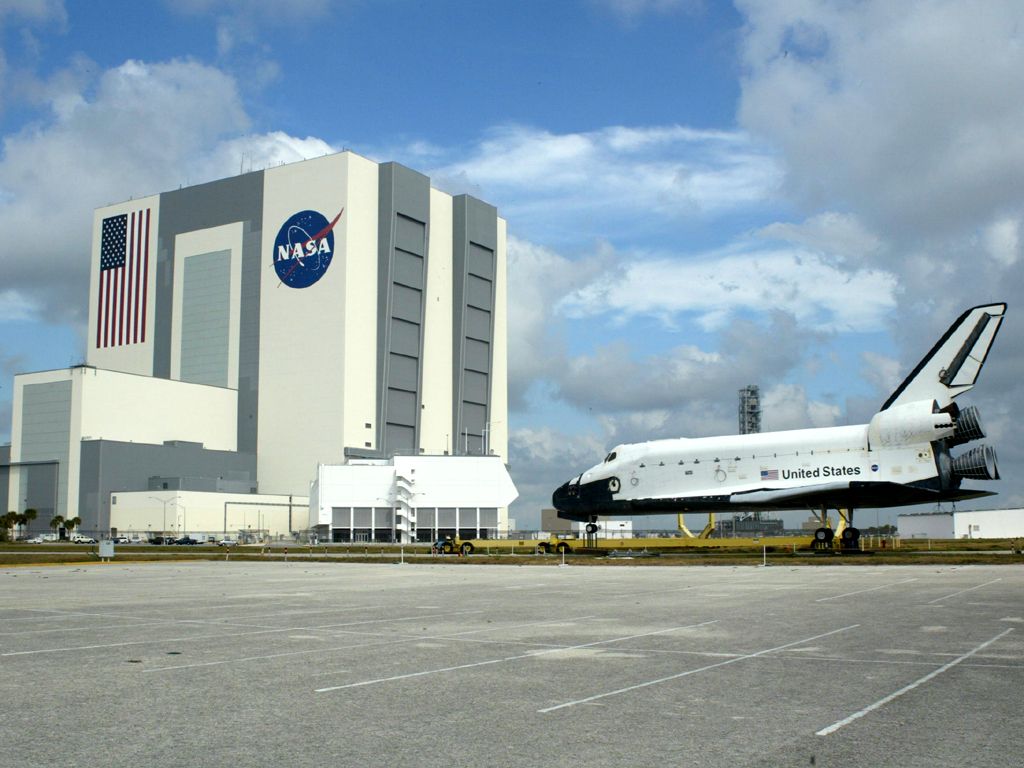

The Saturn V, on loan from the Smithsonian, was displayed outside the Johnson Space Center main entrance from 1977 through 2004. The Apollo Command/Service Module CSM-115a (intended for Apollo 19) completes the rocket as it would stand on the launchpad. SA-513 was originally scheduled for the cancelled Apollo 18 - the rest of the rocket was used for Skylab). The first stage of this Saturn V rocket is from SA-514 (originally intended for the cancelled Apollo 19), the second stage from SA-515 (originally intended for the cancelled Apollo 20), and the third stage from SA-513, which was not needed after it was replaced by the Skylab workshop. Of the three remaining Saturn V rockets on display, only the one at JSC is made up of segments intended for flight. While the museum scored well in commitment and logistics, it scored poorly on popularity among international visitors and was not affiliated with either the Smithsonian or American Association of Museums. A NASA report showing the final scoring among showed Space Center Houston finished 10th among 13 museums competing for the three orbiters (not already committed to the Smithsonian Air and Space Museum). Space Center Houston was considered as a home for one of the retired Space Shuttle orbiters but the Kennedy Space Center Visitor Complex, Intrepid Sea, Air and Space Museum, and California Science Center were instead selected. The giant complex is the biggest project for Space Center Houston since opening in 1992. The center opened the giant exhibit complex on Januat an estimated cost of US$15 million. The plane was transported to Space Center Houston from Ellington Airport on April 30, 2014. On August 14, 2014, a heavy lift called The Rise of Independence was completed to place Independence on top of NASA 905. Independence is now displayed atop the retired Shuttle Carrier Aircraft, NASA 905. The Space Shuttle replica Independence, formerly known as Explorer, previously was located at Kennedy Space Center Visitor Complex but was moved to make way for a new permanent attraction hall for Space Shuttle Atlantis. Independence Plaza is the only place where the public can enter both vehicles. This landmark attraction contains the world's only Space Shuttle replica, where it stands mounted on one of the two original shuttle carrier aircraft.

Space Center Houston is the home of the one-of-a-kind Independence Plaza exhibit complex. Time: Allow 5 hours minimum.The Space Shuttle replica Independence sits atop the Shuttle Carrier Aircraft 905, one of the two Shuttle Carrier Aircraft, with the Johnson Space Center and Rocket Park in the background The NASA Tram Tour takes visitors to NASA Johnson Space Center to see the Apollo Saturn V rocket at Rocket Park. The Astronaut Gallery features spacesuits from every era of space exploration. Spacecraft on display include Mercury, Gemini and the Apollo 17 capsule, Skylab and Lunar Module Trainers. Visitors can see a flown SpaceX Falcon 9 rocket on permanent display to learn about the growing commercial space industry and climb aboard Independence, a replica shuttle mounted on top of the original NASA 905 shuttle carrier aircraft.

If you would like to hear about space exploration first-hand, for an additional fee, you can have breakfast with an Astronaut.

The official visitor center of NASA's Johnson Space Center tells the story of America's human space flight program through historic artifacts, exhibits, live shows and behind-the-scenes tours.


 0 kommentar(er)
0 kommentar(er)
